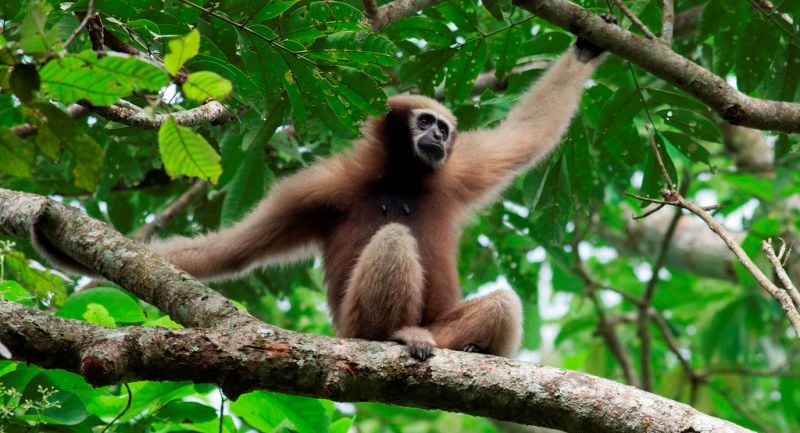Agartala: In a significant stride for wildlife conservation, the Tripura government has unveiled a comprehensive action plan aimed at saving the endangered Western Hoolock Gibbon, India’s sole ape species.
This ambitious initiative marks a crucial milestone in the state’s efforts to safeguard its fragile biodiversity and tackle the alarming decline in the gibbon population.
Despite being listed as “endangered” on the IUCN Red List and enjoying the highest degree of legal protection under Schedule I of the Wildlife (Protection) Act, 1972, the Western Hoolock Gibbon’s numbers have continued to dwindle. The primary threats include habitat loss, hunting, and human-wildlife conflicts.
Tripura, home to one of India’s last gibbon populations, has witnessed a decrease from 97 to 79 individuals since 2005, underscoring the urgent need for intervention.
These agile, tree-dwelling primates are known for their spectacular aerial swings across forest canopies and hauntingly melodic calls that echo through the jungle. But once-flourishing forests have shrunk and fragmented, leaving fewer safe spaces for them to thrive.
The Tripura Forest Department, in collaboration with Tripura University and conservation NGO Aaranyak, convened a multi-stakeholder workshop this year to craft a robust conservation roadmap.
Tripura University’s professor Sabyasachi Dasgupta, who is actively involved in the project, stated that the action plan includes establishing protocols for long-term population monitoring and restoring degraded forest habitats.
Other goals involve training forest staff and law enforcement in wildlife protection, conducting ecological and behavioural research, and promoting community awareness and participation in conservation.
Gibbons in Tripura primarily inhabit protected areas like Trishna Wildlife Sanctuary in South Tripura, and forests in Gomati and Khowai districts.
However, conservationists warn that without proactive measures to prevent further forest degradation, these apes could vanish from the wild.
“Traditional methods like shifting cultivation are deeply rooted, but they often disrupt forest continuity. We need strategies that reduce ecological harm while respecting cultural traditions. Canopy connectivity is crucial for gibbon movement and survival,” he added.
ALSO READ: Tripura CM Manik Saha directs drone surveillance to curb cannabis cultivation
Vignesh, Divisional Forest Officer of Gomati, confirmed gibbons have been sighted in the Amarpur subdivision, with accurate population data still being collected.
Bimal Das, Assistant Conservator at Trishna Wildlife Sanctuary, said that eight gibbons are currently thriving within the sanctuary’s core zone.















